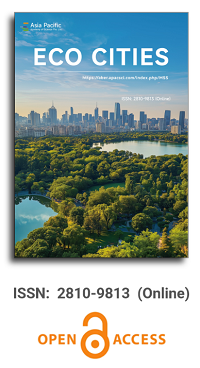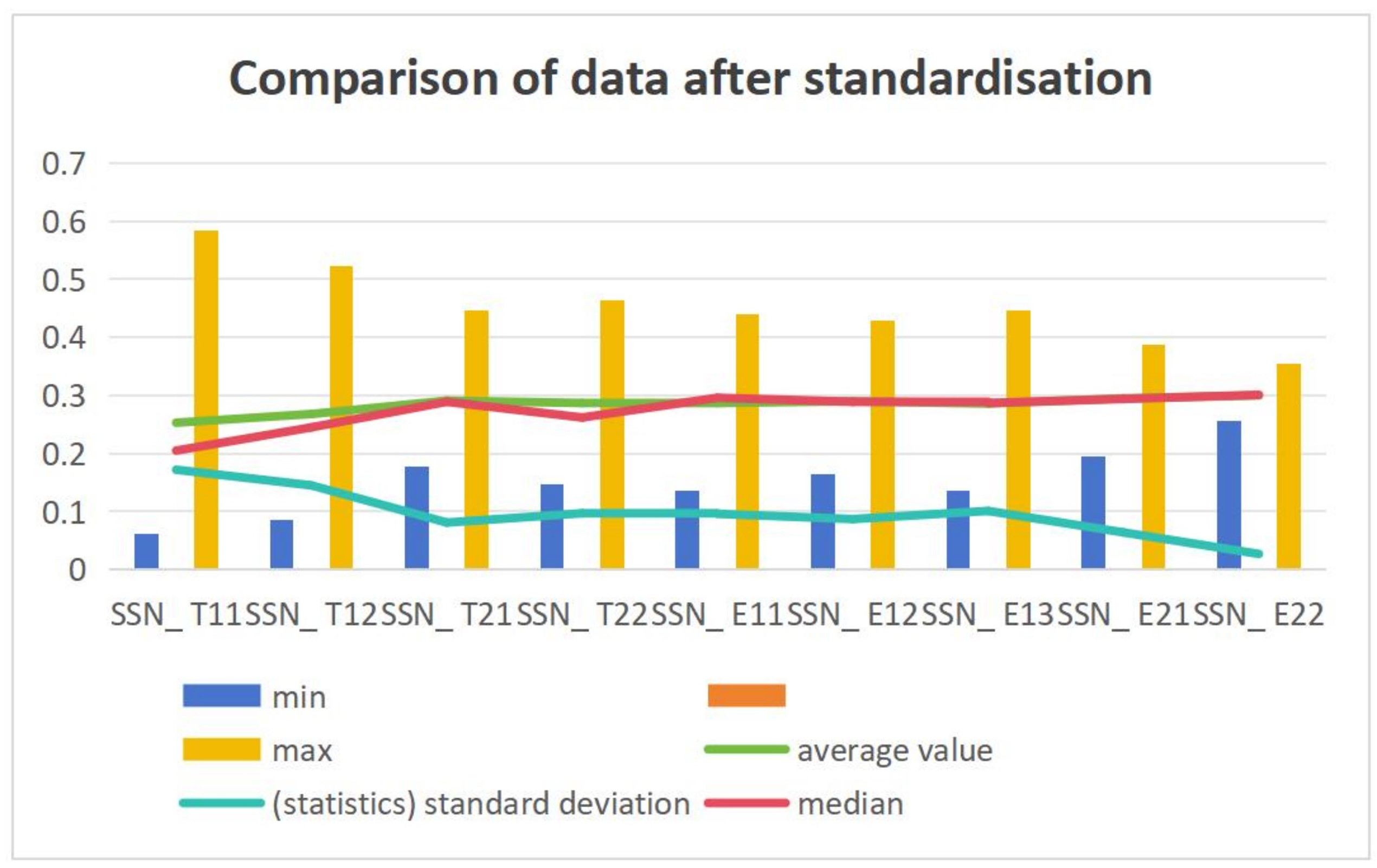


A research on the construction path of ecological city under the concept of carbon neutrality—A case study of Chinese city
Vol 5, Issue 1, 2024
Download PDF
Abstract
Under China’s ambitious goal of peaking carbon dioxide emissions by 2030 and achieving carbon neutrality by 2060, we should re-examine the way of urban development, study the key to carbon pollution, change the original urban renewal path, and seek energy-saving and emission reduction. Therefore, this paper takes Xiamen City as an example, through questionnaire survey, mathematical statistics analysis and other methods, combined with the practice of low-carbon city and ecological civilization construction in Xiamen City, this paper makes an in-depth analysis of carbon pollution problems such as transportation carbon emissions, domestic waste disposal carbon emissions and industrial waste carbon emissions in Xiamen City, and puts forward the urban renewal path of Xiamen City to effectively reduce carbon emissions based on the concept of carbon neutrality, which provides a low-carbon plan for Xiamen City’s urban renewal and is of great significance for Xiamen City to achieve the dual-carbon goal.
Keywords
References
- Liu J, Shao T, Zhang X, et al. Problems and experience of eco city construction in China’s rapidly urbanizing areas: taking Xiamen City as an example. Journal of University of the Chinese Academy of Sciences. 2020; 37(04): 473-482.
- Shao W, Lin Z. Discussion on Ecological Concepts Promoting Urban Transformation and Development: A Case Study of Xiamen City. Fujian Construction Science and Technology. 2021; (02): 1-4.
- Xue H. Analysis of the Implementation Path of Ecological Urban Construction under the “Dual Carbon” Goal: A Case Study of Fuzhou. Journal of Fuzhou Party School. 2023; (05): 80-85.
- Cao J. Construction Experience and Enlightenment of Low-Carbon Ecological Cities Abroad. Journal of Hexi University. 2023; 39(04): 104-110. doi: 10.13874/j.cnki.62-1171/g4.2023.04.016
- Dong X, Fu J, Yang B, et al. Planning and Construction of the “First Ecological Town in the UK” with the Goal of Zero-Carbon and Vibrant Living: A Case Study of Northwest Bicester Ecotown. Urban Development Research. 2023; 30(09): 29-34.
- Xue X, Li M. Analysis of the High-Quality Development Path of Ecological Cities under the “Dual Carbon” Goal: A Case Study of Hefei. Journal of Changchun Party School. 2023; (01): 59-64. doi: 10.13784/j.cnki.22-1299/d.2023.01.009
- Zou F, Zhu N, Guo E, et al. Practice of Eco-City Nearly Zero Energy Building Technology under the Background of “Dual Carbon”: A Case Study of Sino-Singapore Tianjin Eco-City. Green Building. 2023; 15(04): 13-18.
- Ji Y, Lu Y, You Z. Evaluation of the Low-Carbon and Ecological Development of Coastal Cities and Research on Nature-Based Construction Paths. Marine Development and Management. 2023; 40(06): 67-79. doi: 10.20016/j.cnki.hykfygl.20230713.002
- Yin Y, Wu Y, Wang X. Creation of a Green Building System for Low-Carbon Ecological Cities. Nonferrous Metal Design. 2023; 50(01): 40-43.
- Zang X, Wang Q, Li H. Development Strategy and Implementation Path of Ecological City under the “Dual Carbon” Goal. Science and Technology Review. 2022; 40(06): 30-37.
- Dong C, Sun G, Zhu L, et al. Study on Low-Carbonization Strategy of Buildings Based on the Concept of Ecological City. Jiangxi Building Materials. 2022; (11): 100-101.
- Gan C, Shi S. Analysis on the Construction and Countermeasures of Urban Ecological Civilization in Xiamen based on the “Five in One”. Journal of Central South University of Forestry and Technology (Social Science Edition). 2017; 11(02): 7-11.
- Zheng S. Research Report on Carbon Trading Pilot Projects in Seven Provinces and Cities. Energy and Environment. 2014; 36(2): 23-27.
- Yu P, Chen X, Ma L. Review of Residential Building Lifecycle Carbon Emissions. Building Science. 2011; 27(04): 9-12. doi: 10.13614/j.cnki.11-1962/tu.2011.04.021
- Chu C. Research on the Development Strategy of Urban Zero-Carbon Transportation from the Perspective of Carbon Neutrality. China Urban Planning Society and Chengdu Municipal People’s Government. In: Spatial Governance for High-Quality Development—2021 China Urban Planning Annual Conference Papers (06 Urban Transportation Planning). China building industry press; 2021. pp. 677-685.
- Wang B, Zhang H. Research on the Development Strategy of Low-Carbon Transportation in Guangzhou. Urban Transportation. 2018; 16(04): 74-80. doi: 10.13813/j.cn11-5141/u.2018.0410
- Li P, Hao B. Seawater Source Heat Pump Application Model—The World’s Largest Seawater Source Heat Pump Unit District Heating and Cooling Facilities. Construction Technology. 2004; (14): 26-27.
- Li N. Carbon Neutralization Assessment Mechanism Innovation: From Carbon Peak to Carbon Neutralization. Beijing Power Grid; 2021.
- Luo Y, Yu T, Zhang Y, et al. Digitalization empowers the ‘double carbon’ transformation of territorial space governance. Future Urban Design and Operation. 2022; (06): 42-46.
- Zhang H. It is necessary to cultivate professional talents to adapt to ‘double carbon’. Resources and Living Environment. 2022; (05): 64-67.
- Ang Y, Zhang M. Zero carbon community planning implementation strategy. In: Proceedings of the 28th Annual Symposium of Beijing Mechanics Society; 2022. pp. 795-798.
Supporting Agencies
Copyright (c) 2024 Jianxun Deng, Gongwu Tao, Siying Fan, Junsong Liu, Jihao Liu, Yu Wang
License URL: https://creativecommons.org/licenses/by/4.0/

This site is licensed under a Creative Commons Attribution 4.0 International License (CC BY 4.0).

Chinese Academy of Sciences, China
Indexing & Archiving
Asia Pacific Academy of Science Pte. Ltd. (APACSCI) specializes in international journal publishing. APACSCI adopts the open access publishing model and provides an important communication bridge for academic groups whose interest fields include engineering, technology, medicine, computer, mathematics, agriculture and forestry, and environment.



.jpg)

.jpg)



